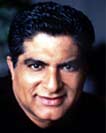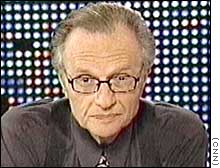 “Let us pray,” the pastor exhorts the congregation attending the Sunday service in his suburban church. A suburban housewife lowers her head and ponders her blessings. She intones her silent prayer: “Thank you, God, for helping me find Zoloft.”
“Let us pray,” the pastor exhorts the congregation attending the Sunday service in his suburban church. A suburban housewife lowers her head and ponders her blessings. She intones her silent prayer: “Thank you, God, for helping me find Zoloft.”
Although people do not think of taking their Prozac as a religious act, in a way it is; and as such, their freedom to take such drugs could easily be viewed in the context of the freedom of religion enshrined in the US Constitution.
The profits to be made from Prozac will keep it legal no matter what connection one draws between access to it and freedom of religion, but the US puts its foot down on psychotropic drugs that “alter reality”, notably LSD, in the name of protecting society’s members from themselves. A lesser known drug banned under Schedule I is DMT.
Dr. Rick Strassman is a controversial DMT researcher, author of DMT , the Spirit Molecule, which claims, among other things, that the emergence of the pineal gland in the brain 49 days after conception marks the entry of the spirit into the body (shades of the ancient Greeks who located the “mind” in that very same gland); that chanting stimulates the pineal gland to produce more DMT; and, farther afield, that DMT is connected to alien visitations. Strassman is also a Buddhist who proposed to Zen students they try some drugs as a way to extend their practice.
DMT, it turns out, is also found in the hallucinogenic tea (see picture) from the Amazon rain forest which adherents of the Brazilian group O Centro Espirita Beneficiente Uniao Do Vegetal (UDV) drink as part of their religion. The DEA confiscated the illegal substances, marked “herb tea”. Lower courts then upheld the group’s right to imbibe their sacraments, and ordered the tea the feds had seized returned, but the Bush administration appealed to the Supreme Court, which on Monday agreed to hear the case.
I won’t go into the details of the case here; more information is on the SCOTUSblog and in this Christian Science Monitor article.
The tea is called “ayahuasca” or “hoasca” (site) in Quechua, the language of the Incas. Based on my limited knowledge of Quechua, I believe the pronunciation is something like “wasca”. The meaning is “vine of the soul,” “vine of the dead,” or “vision vine”. The potion is said to
enable access to the visionary or mythological world that provides revelation, healing, and ontological security
I don’t know what ontological security means but it sounds good. Anyway, for purposes of this legal case in the US, the group’s lawyers suddenly sound extremely monotheistic, positioning the tea as letting believers “connect with God”, while denying that it causes any nasty hallucinations.
Ayahuasca is a combination of the vine called Yage, which has sedative, hypnotic, and anti-depressant effects. It becomes a visionary catalyst when mixed with chacruna (Psychotria viridis), which is where the DMT the feds are worried about comes from.
There is an enzyme in our bodies called MOA (Monoamine Oxidase), which serves to deactivate neurotransmitters. The vine contains chemicals which inhibit the functioning of this enzyme (MOAIs). That reduces the metabolization of serotonin, and lets the DMT reach receptors in the brain, with an entheogenic (religious inebriation) effect. Warning to suburban housewife above: do not mix SSRIs with wasca!
As we progress in our understanding of neuroscience, neurochemistry, and neurotheology, our society and legal system will be confronted with increasingly subtle decisions that probe the boundaries of what we consider religion and religious practice. The DMT that naturally occurs in the brain, as the lower court judge in the ayahuasca case pointed out, cannot, of course, be made illegal. But then, what about meditation techniques that stimulate production of DMT in the brain? If DMT is dangerous to humans and should be banned because of its effects on them, then certainly practices causing the internal production of DMT are also dangerous and should be banned, right? If those practices are dangerous, then publishing information about them is equally dangerous, so let’s censor such publications. Or, imagine a device, such as a transcranial stimulation helmet, that activates a naturally-occurring hallucinogenic chemical in the brain—we must ban that as well. Thus begins our descent down the slippery slope.
The Supreme Court rarely gives us broad, overreaching decisions, often limiting their opinions to narrow, legalistic issues, but in this case, we certainly hope that they come down firmly on the side of the wide-ranging religiious freedom that our founders built into the fabric of our government 200 years ago.
 I’ve renamed this blog Numenware to highlight its evolving focus on neurotheology issues.
I’ve renamed this blog Numenware to highlight its evolving focus on neurotheology issues.
 I am pleased to announce the first annual neurotheology market size survey.
I am pleased to announce the first annual neurotheology market size survey. “Let us pray,” the pastor exhorts the congregation attending the Sunday service in his suburban church. A suburban housewife lowers her head and ponders her blessings. She intones her silent prayer: “Thank you, God, for helping me find Zoloft.”
“Let us pray,” the pastor exhorts the congregation attending the Sunday service in his suburban church. A suburban housewife lowers her head and ponders her blessings. She intones her silent prayer: “Thank you, God, for helping me find Zoloft.” In my relentless quest to bring the very latest and most objective reporting to Numenware readers, I jumped at the chance to go hear Dr. Deepak Chopra talk in person last night. Sometimes people can get their ideas across much better in person than on the written page (
In my relentless quest to bring the very latest and most objective reporting to Numenware readers, I jumped at the chance to go hear Dr. Deepak Chopra talk in person last night. Sometimes people can get their ideas across much better in person than on the written page (
 My
My  Think of meditation in the same way you think of flossing.
Think of meditation in the same way you think of flossing. Larry King, our favorite geriatric talk show host, revisited the old why-God-lets-horrible-things-happen problem on a
Larry King, our favorite geriatric talk show host, revisited the old why-God-lets-horrible-things-happen problem on a  What are the neurological correlates of “one hand clapping”, the most famous Zen koan in the world?
What are the neurological correlates of “one hand clapping”, the most famous Zen koan in the world? A new study supports the idea that meditation causes long-term physiological changes in brain structure. A summary is
A new study supports the idea that meditation causes long-term physiological changes in brain structure. A summary is